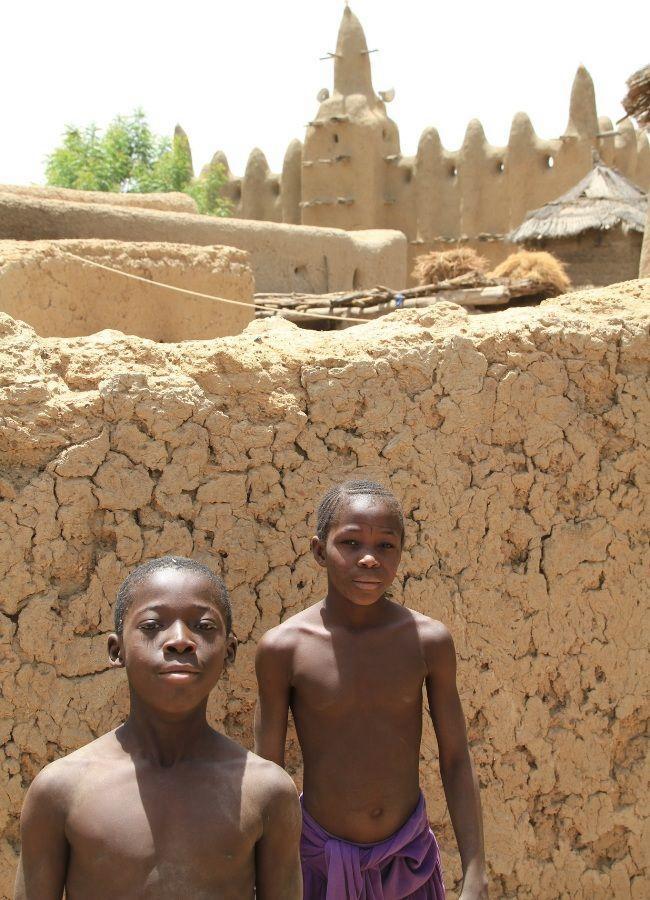
Malian Empire: Islamization

Figure 1.--This modern photo was taken in recent times, but it illustrate the description of Mali Empire written by Ibn Battuta. The photo shows a shirtless boy and girl near a traditional mud mosque. Ibn Battuta writes with admiration about the riches of the Malian Empire and the faith of the Sultan (Emperor), but he was scandalized about dress and modesty. He was surprised that little girls went about without clothes in public. Boys did the same, but that di not bother Battuta. He also was scandalized that slave women went 'in front of all men full naked' and that all women, including his daughters, had to be naked in Sultan's presence. Clearly Islam didn't change African customs concerning clorhing and modesty.
|
|
The Mali Empire was a Muslim kingdom, unlike the Ghana Empire which it followed (1230-1600 AD). King Baramendana Keita conveted to Islam, convinced Moslems brought rain that ended a drought (middle-11th century). This was before the people of the Sahel were heavily Islamizied. Unlike the Soninke and the Sosso, Mande royalty adopted Islam at aelatively early point. The King Keita made his hajj (pilgrimage to Mecca) and appointed Muslims to his court. He also made alliances with Muslim groups to the north. Next to Sundiata, the most famous ruler of the Mali Empire is Mansa Kankan Musa I. He rose to the throne several decades after the death of Sundiata. Musa was not the first Malian emperor to adopt Islam. Musa's hajj (1324–25) was noted by both the Islamic world as well as Europeans. Musa startled observers for the wealth he displayed during his stopover in Egypt. He was accompanied by an enormous entourage. Musa spent so lavishly in gold in Cairo that the metal's value plummeted.
The Mali Empire was previously little known beyond the Sahel. The Empire began a ,atter of klegend. The image onthe previous page of Musa and his gold decorating a map of Africa appeared a few decade later (figure 1). The traveler Ibn Battuta visited ancient Mali a few decades after Musa's death (14th century). He was impressed by the peace and lawfulness prevalent in the Empire. He was scandalized, however, by the lax form of Islam practice there. [Ibn Battuta] Ironically this is much the same experience as expressed by the Whabbi Islajicists trying to seize control of Mali today. Clothing and modesty trends are still much more relaxed than those demanded by the various braches of Islamic fundamentalism as we can see in the modern image here Figure 1). .
Sources
Ibn Battuta. Book/diary, the Rihla.
HBC

Navigate the Historic Boys' Clothing Web Site:
[Return to the Main Mali Empire page ]
[Return to the Main Mali religion page ]
[Return to the Main African empire page ]
[Return to the Main Slave trade: African political structure]
[Introduction]
[Activities]
[Art chronologies]
[Biographies]
[Chronology]
[Countries]
[Photography]
[Style Index]
[Bibliographies]
[Contributions]
[FAQs]
[Glossaries]
[Images]
[Links]
[Registration]
[Tools]
[Boys' Clothing Home]
Created: 4:36 PM 2/25/2013
Last updated: 4:36 PM 2/25/2013



